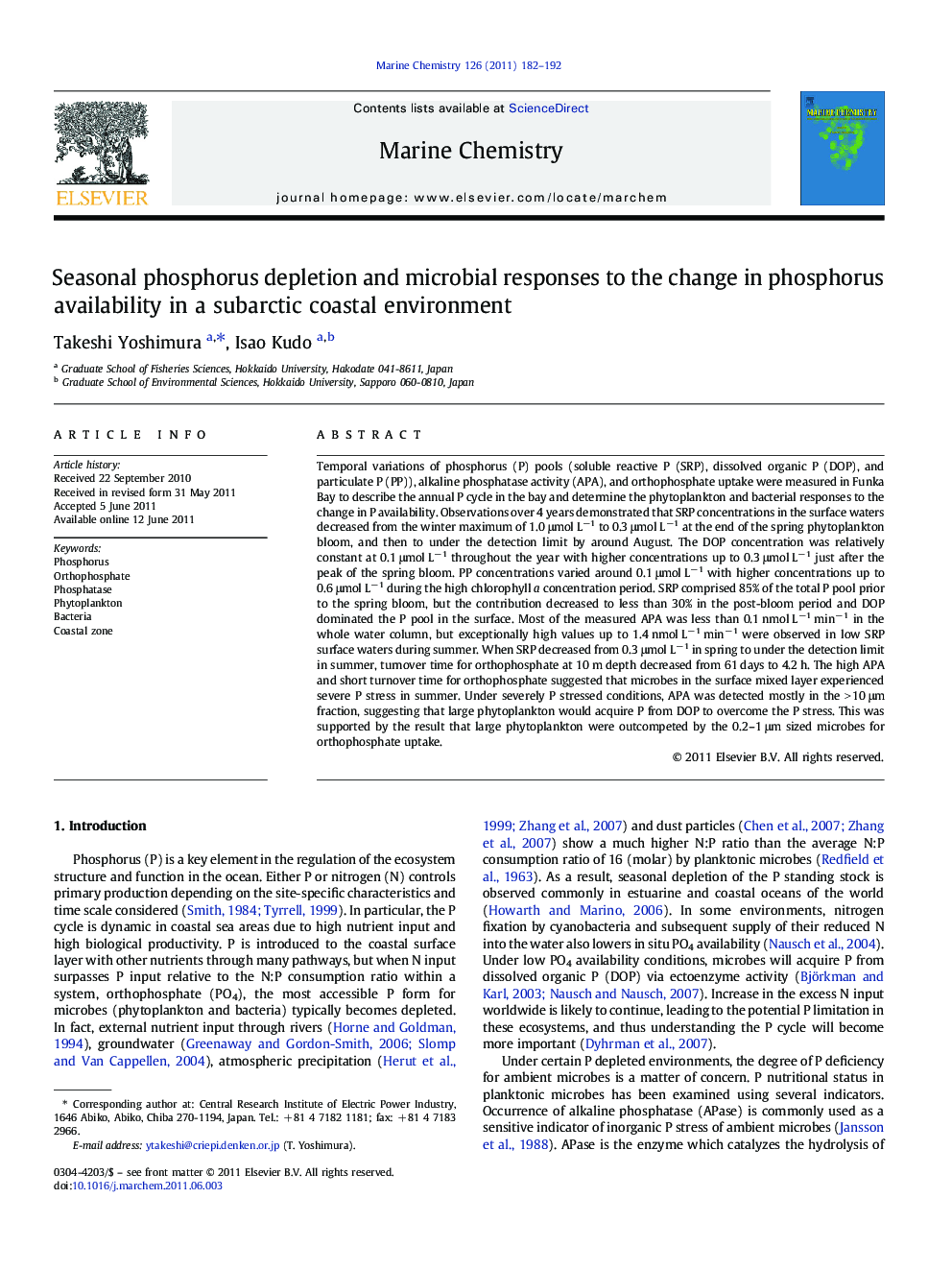| Article ID | Journal | Published Year | Pages | File Type |
|---|---|---|---|---|
| 1261984 | Marine Chemistry | 2011 | 11 Pages |
Temporal variations of phosphorus (P) pools (soluble reactive P (SRP), dissolved organic P (DOP), and particulate P (PP)), alkaline phosphatase activity (APA), and orthophosphate uptake were measured in Funka Bay to describe the annual P cycle in the bay and determine the phytoplankton and bacterial responses to the change in P availability. Observations over 4 years demonstrated that SRP concentrations in the surface waters decreased from the winter maximum of 1.0 μmol L−1 to 0.3 μmol L−1 at the end of the spring phytoplankton bloom, and then to under the detection limit by around August. The DOP concentration was relatively constant at 0.1 μmol L−1 throughout the year with higher concentrations up to 0.3 μmol L−1 just after the peak of the spring bloom. PP concentrations varied around 0.1 μmol L−1 with higher concentrations up to 0.6 μmol L−1 during the high chlorophyll a concentration period. SRP comprised 85% of the total P pool prior to the spring bloom, but the contribution decreased to less than 30% in the post-bloom period and DOP dominated the P pool in the surface. Most of the measured APA was less than 0.1 nmol L−1 min−1 in the whole water column, but exceptionally high values up to 1.4 nmol L−1 min−1 were observed in low SRP surface waters during summer. When SRP decreased from 0.3 μmol L−1 in spring to under the detection limit in summer, turnover time for orthophosphate at 10 m depth decreased from 61 days to 4.2 h. The high APA and short turnover time for orthophosphate suggested that microbes in the surface mixed layer experienced severe P stress in summer. Under severely P stressed conditions, APA was detected mostly in the > 10 μm fraction, suggesting that large phytoplankton would acquire P from DOP to overcome the P stress. This was supported by the result that large phytoplankton were outcompeted by the 0.2–1 μm sized microbes for orthophosphate uptake.
Research highlights► Variations of P pools were measured for 4 years in Funka Bay, Japan. ► PO4 concentrations decreased to under the detection limit in summer surface waters. ► Microbes in the surface mixed layer experienced severe P stress in summer. ► PO4 uptake was dominated by pico-phytoplankton and bacteria. ► Large phytoplankton acquired P from DOP using alkaline phosphatase.
